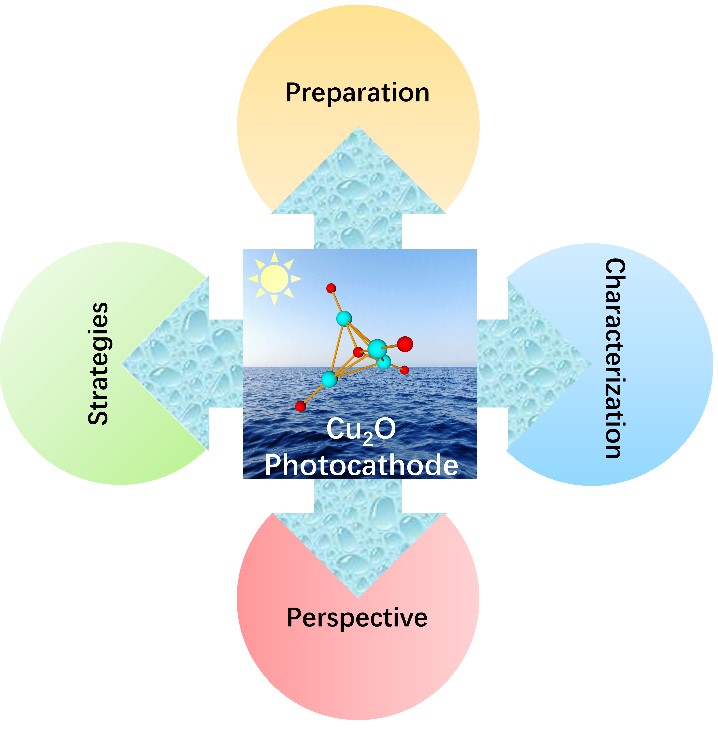Huasen Lu, Shixu Song, Qisen Jia, Guangbo Liu, Luhua Jiang*
Nano Materials and Electrocatalysis Laboratory, College of Materials Science and Engineering, Qingdao University of Science and Technology, Qingdao 266042, Shandong Province, China.
Abstract: With the consumption of unrenewable resources and the aggravation of environmental pollution, more and more attentions have been focused on developing renewable and environmental-friendly energies. Hydrogen as a clean energy carrier, is believed to be an ideal chemical to generate power via fuel cells. To produce hydrogen from water splitting, integrated with renewable energies from solar, wind, ocean and so on, is very attractive. Due to its simple application conditions, a considerable number of researchers have been attracted by photoelectrocatalytic water splitting to produce hydrogen. As cathode material for hydrogen evolution, its conduction band should be more negative than hydrogen reduction potential. Based on this premise, many photocathode materials have been developed, such as p-Si, InP, GaN and so on. Among these, copper (Cu) based compounds have enormous advantages because of its low preparation cost and various species. Cu2O, a non-toxic and stable in storage p-type metal oxide semiconductor material, taking advantage of appropriate band structure for water splitting with a direct band gap of 1.9~2.2 eV, facile preparation and abundance in resources, stands out from many materials and has become an emerging material as photocathodes, yet suffers from fast combination of photogenerated carriers and severe photo-corrosion, leading to unsatisfactory efficiency and poor stability. To handle these problems, researchers have put forward solutions accordingly. Because the reduction and oxidation potentials of Cu2O are between the reduction and oxidation potentials of water, it is much easy for electrons to reduce Cu2O when Cu2O cathode is used for water reduction. What’ s worse, Cu2O is not an ideal hydrogen evolution catalyst. Thus, fortified with co-catalyst could improve not only stability but also hydrogen evolution activity. Besides co-catalyst, suitable n-type semiconductor has also received a lot of attentions due to the built-in electric field of p-n junctions, which could enhance separation of photo generated carriers, and abundant n-type semiconductors provide more possibilities. Similarly, the hole transfer layer on the bottom could also promote carriers separation. Considering that water is essential for Cu2O reduction, one of the most effective ways to improve stability is by adding a protective layer that can isolate water. In this review, we give a review on (1) mechanism of photoelectrochemical water splitting and the band structure of Cu2O, (2) preparation methods of Cu2O photocathodes, (3) strategies to improve the efficiency and stability of Cu2O photocathodes, including construction of p-n junctions, integration with co-catalysts, modification by hole transport layers and so on, (4) advanced photoelectrochemical characterization techniques, and finally we give a prospective for future research directions on photocathodes.
Key Words: Photoelectrocatalysis; Cuprous oxide; Hydrogen evolution reaction; Photocathode; Water splitting
https://www.whxb.pku.edu.cn/EN/10.3866/PKU.WHXB202304035



